The Disco Network
Simplified onboarding with clearer paths for every brand.
This project rebuilt brand setup to make onboarding intuitive and adaptable for every brand. The previous flow was rigid and slowed growth. Brands can now choose how they participate: advertise to grow their reach, publish to monetize post-purchase pages, or do both. This flexibility created a faster, more scalable foundation for Disco’s growing network.

Why the system had to change
As Disco grew, the system that once worked began to strain. A single control managed both advertising and publishing, creating confusion and support bottlenecks. Brands needed clearer guidance and autonomy to launch without one-to-one support, but the old setup couldn’t scale to meet those needs.
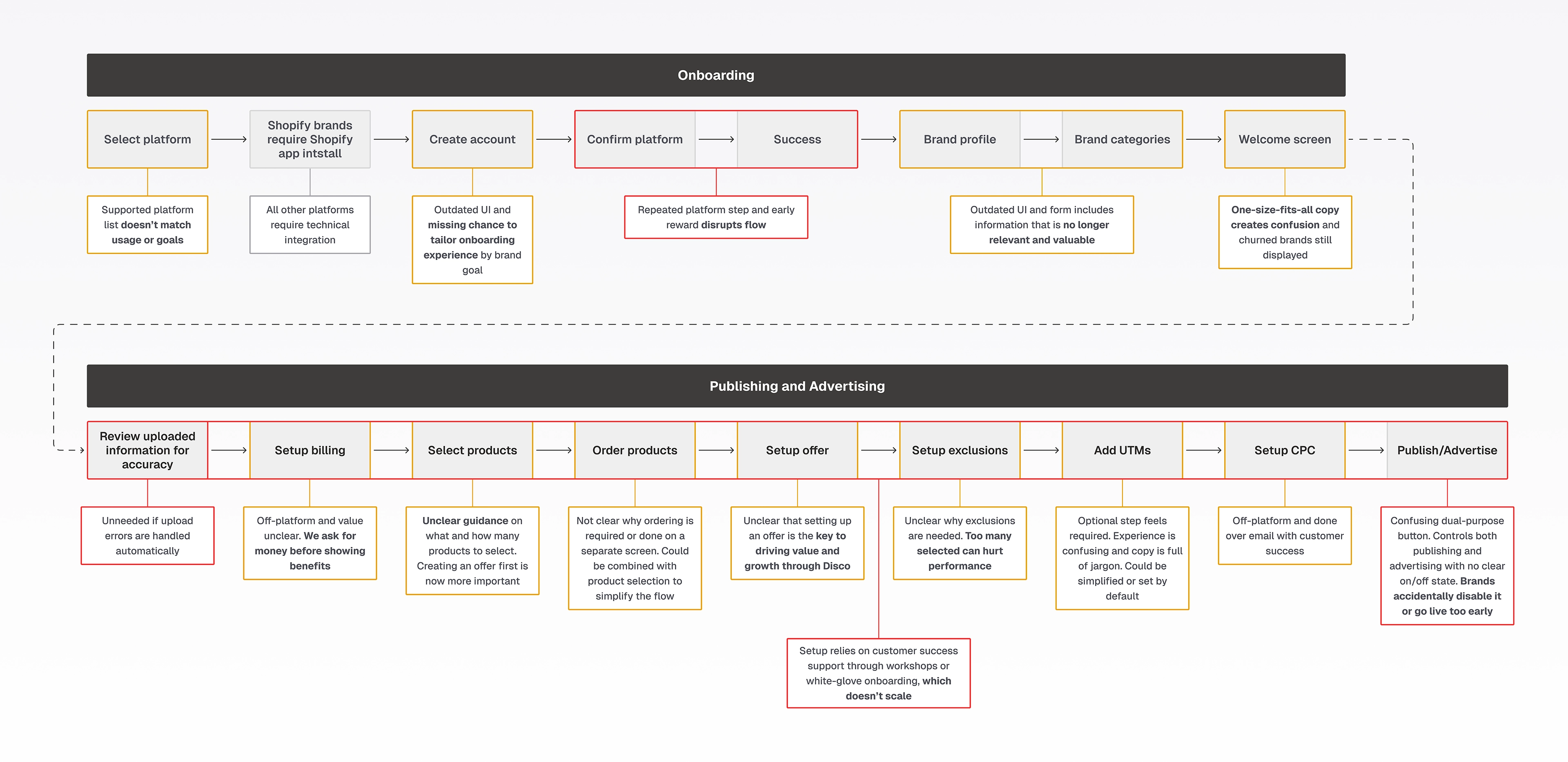
Reducing friction in onboarding
The previous onboarding flow was outdated and rigid. It asked for details no longer relevant, forced every brand through the same setup, and offered no clear next step once complete. Brands finished setup but didn’t know how to move forward, while internal teams had to step in to fill the gaps.
This friction blocked value at a critical moment, slowing time to impact and creating support bottlenecks for brands that needed more technical guidance. Streamlining these steps became essential to help brands launch faster and with confidence.
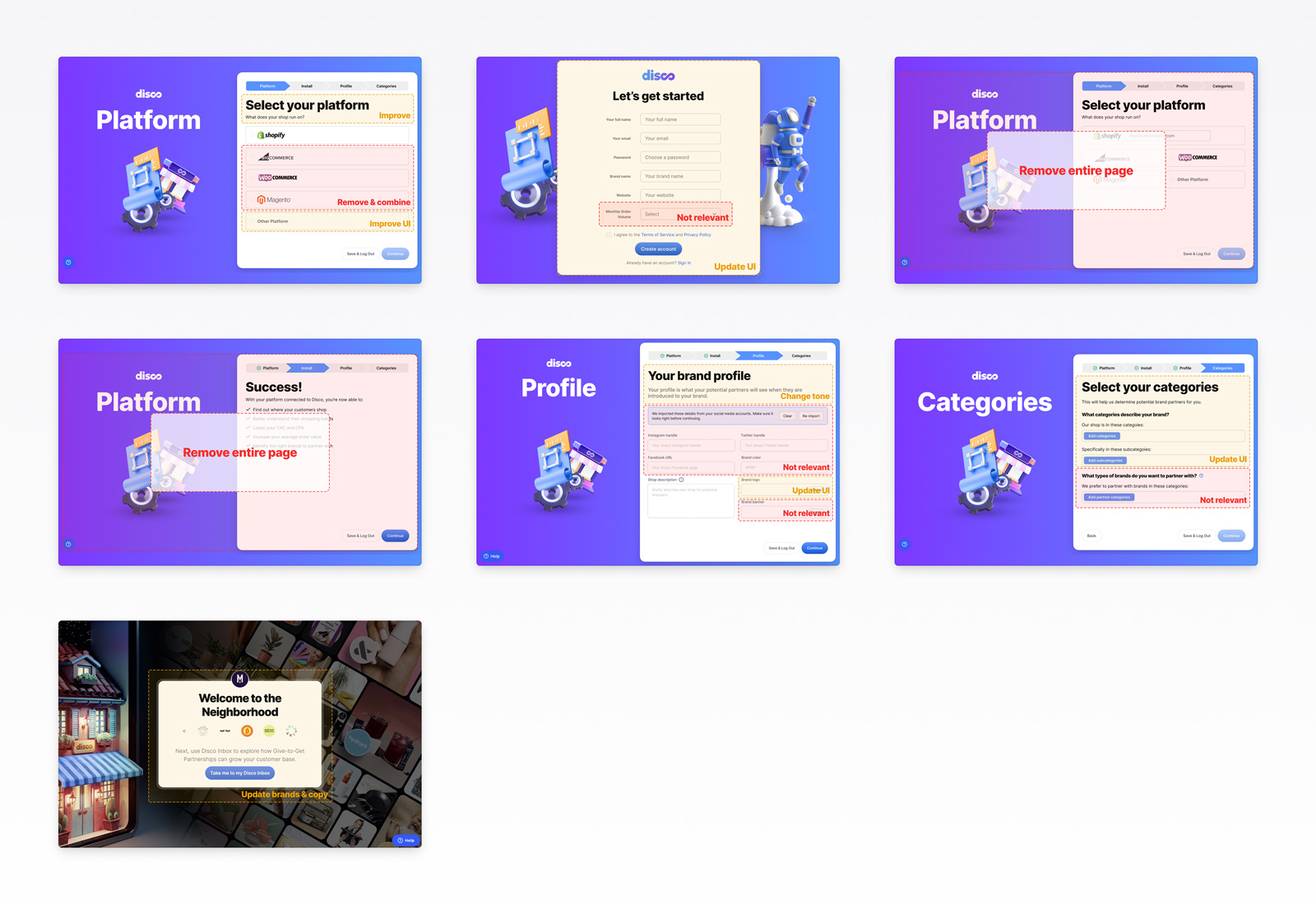
Redesigning for clarity and control
We redesigned setup around clarity and control. Two dedicated paths now guide advertising and publishing, giving brands flexibility to launch at their own pace.
Instead of rebuilding everything, we refined what worked, removed friction, and created an experience that feels faster and more intuitive.

Simplifying how brands get started
Each step was rethought to feel natural and intuitive. The new flow mirrors how brands actually work: selecting a platform, defining their profile, and choosing categories to power discovery. A clear confirmation now signals setup is complete and ready to grow.
Platform selection

Brand profile setup

Category selection

Welcome screen
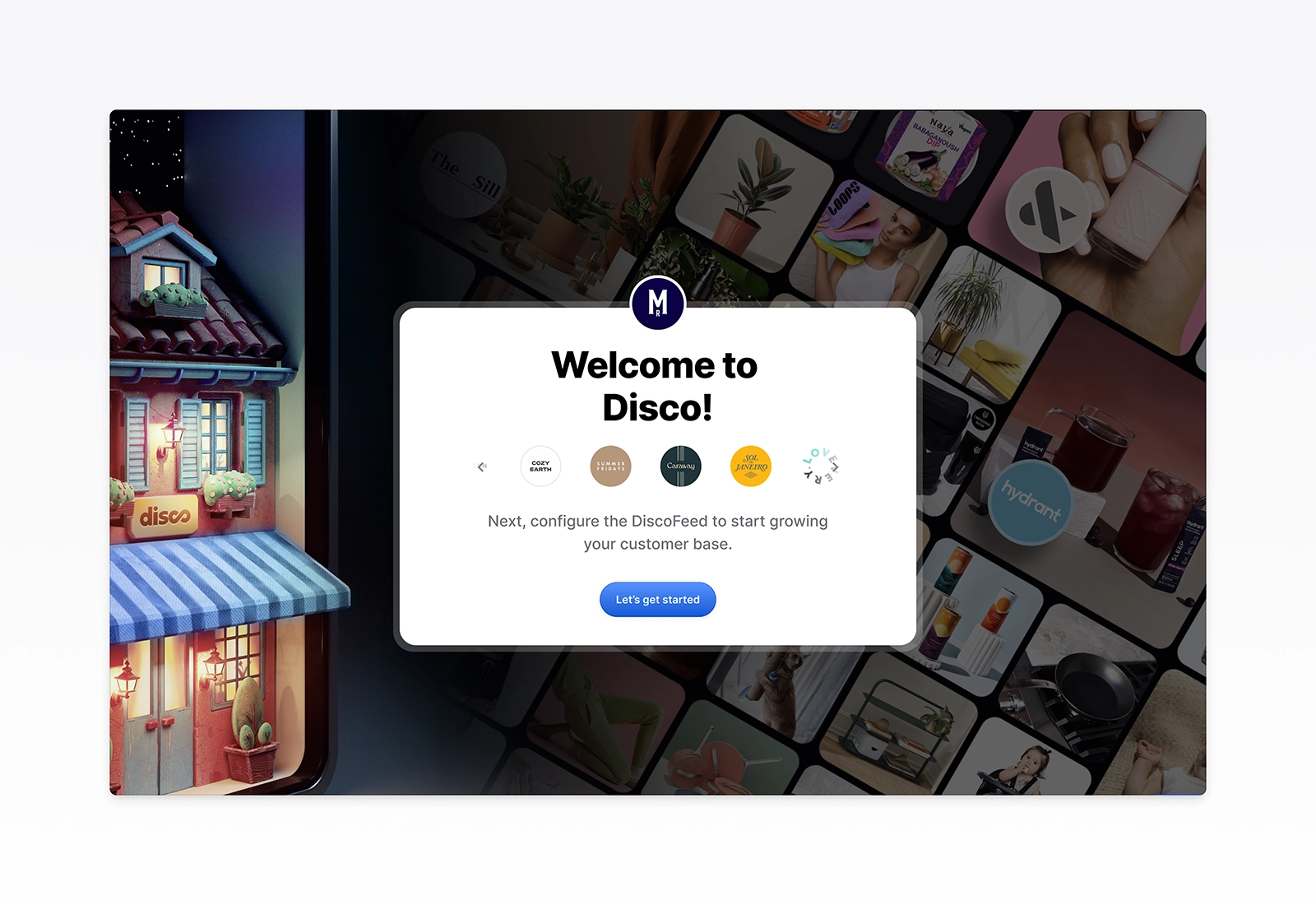
Separating roles to unblock growth
As Disco expanded, a single control managed both advertising and publishing, creating confusion and frequent missteps. Brands with different goals followed the same path, forcing support teams to step in to fix errors and clarify intent.
Separating these roles became essential to reduce friction and help brands move forward independently.
Advertising and Publishing control



System logic breakdown

Creating dedicated paths for setup
We redesigned setup around distinct paths for advertising and publishing so each brand could start based on its goals. Every step was simplified to feel self-guided and focused, with clearer feedback and streamlined inputs. The result was a faster, more scalable experience that reduced support needs.
Advertising flow
Publishing flow
Built to scale with brand needs
As new use cases emerged, setup became harder to navigate. We rebuilt flows to be clearer and more self-serve, anchored by progress states and responsive feedback. Distinct paths for advertising and publishing created a scalable foundation that reduced support needs and matched how brands grow.
Advertising overview

Publishing overview
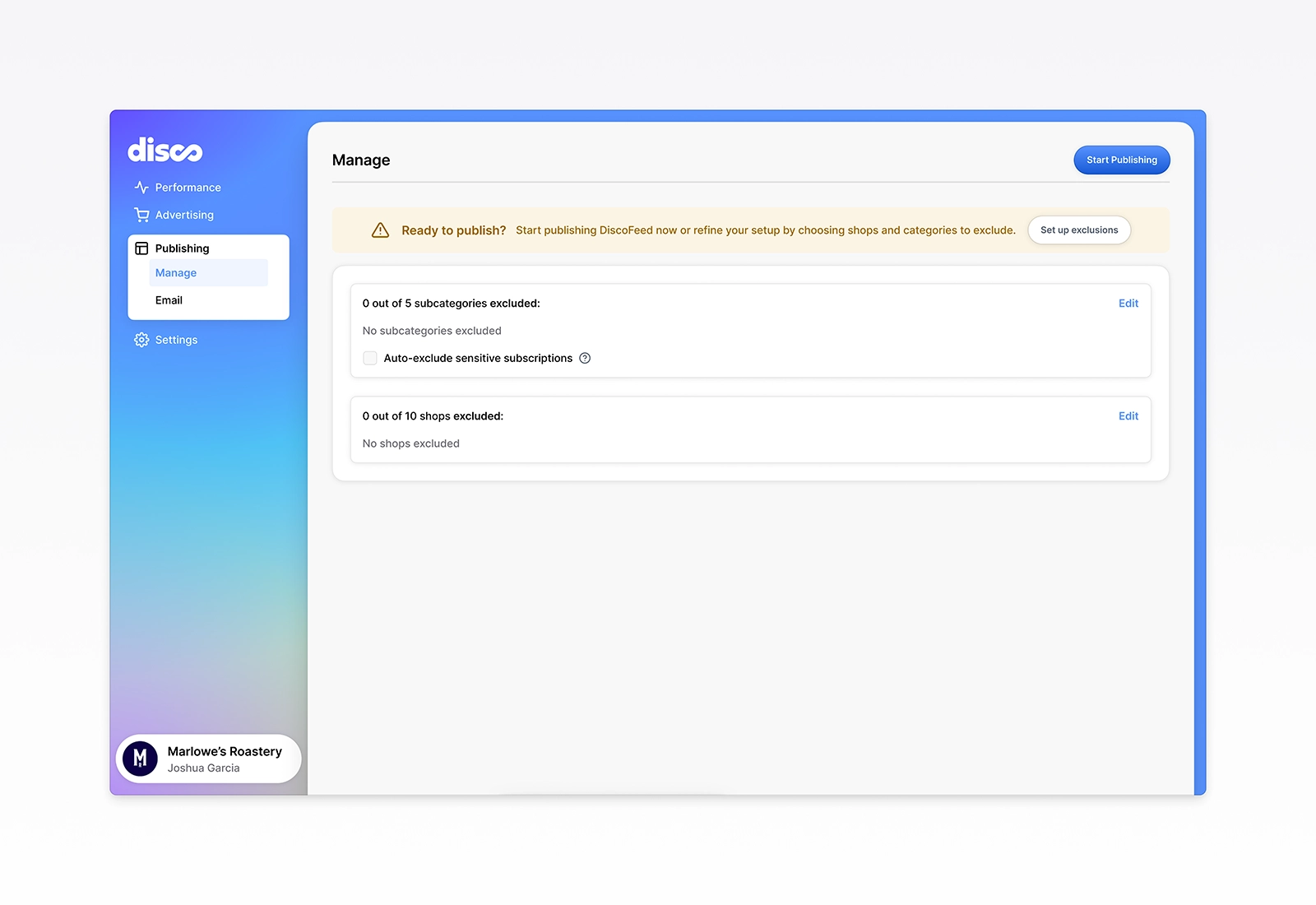
System feedback & UX infrastructure



Removing blockers to move faster
We streamlined the platform to move faster. Features that slowed setup or caused confusion were removed, while non-essential projects were postponed to sharpen focus on core functionality.
By simplifying scope, we reduced friction, improved clarity, and built a stronger foundation for scalable growth.
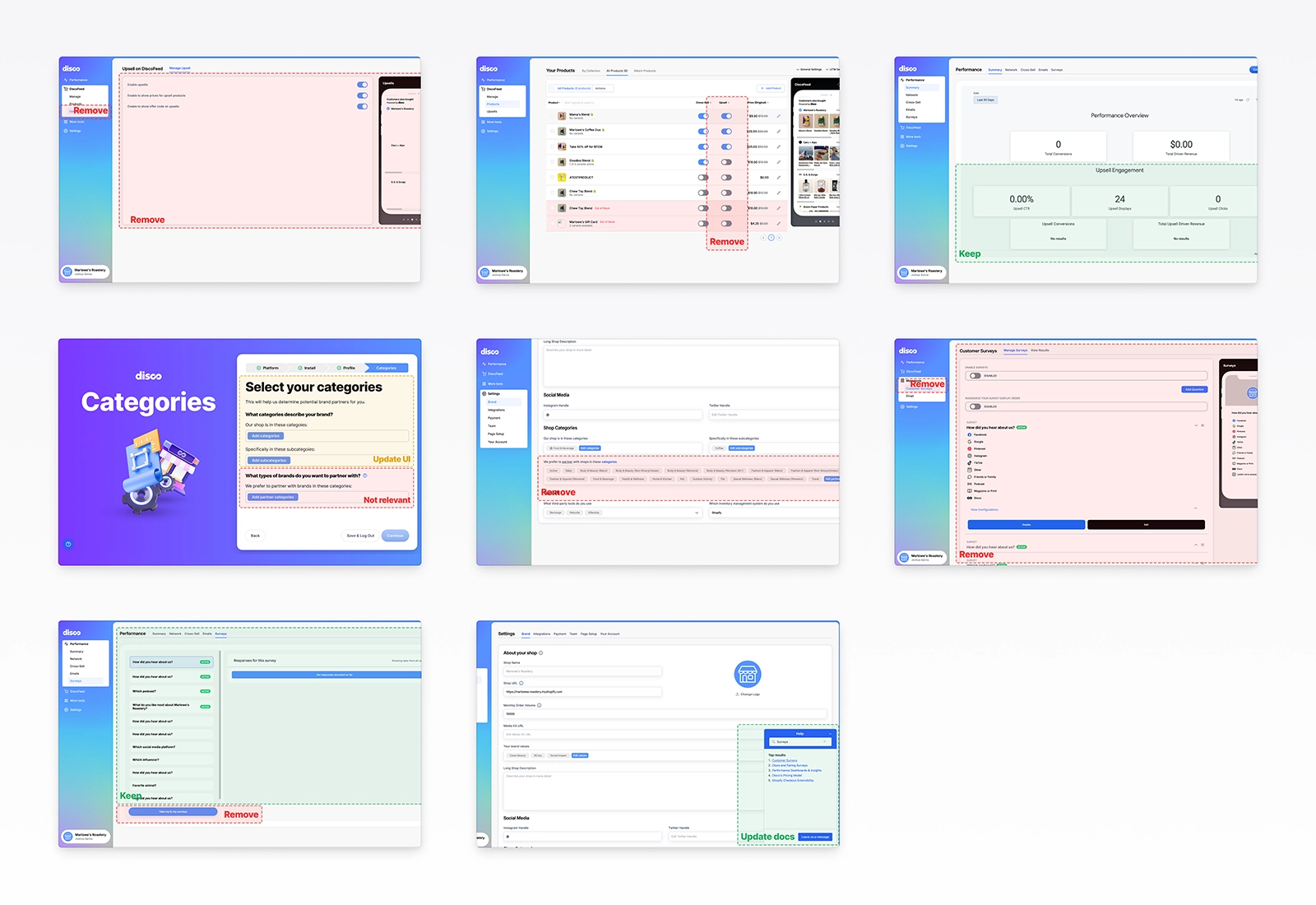
Collaboration that drove progress
We partnered with customer success to rebuild setup around real friction, focusing only on what brands needed to launch. Together, we streamlined sequencing, clarified priorities, and reduced confusion across flows.
When engineering capacity was limited, I prototyped and shipped improvements directly, introducing dynamic states and clearer documentation to maintain momentum and long-term clarity.
Mapping problems, challenges, and goals

Integration component states

A more scalable foundation
The redesigned setup removed friction and reduced support needs, giving brands a faster, clearer path to launch.
By focusing only on essential steps, the experience became easier to complete and scale. Refined feedback patterns and consistent UI modernized every interaction and empowered brands to self-serve with confidence.
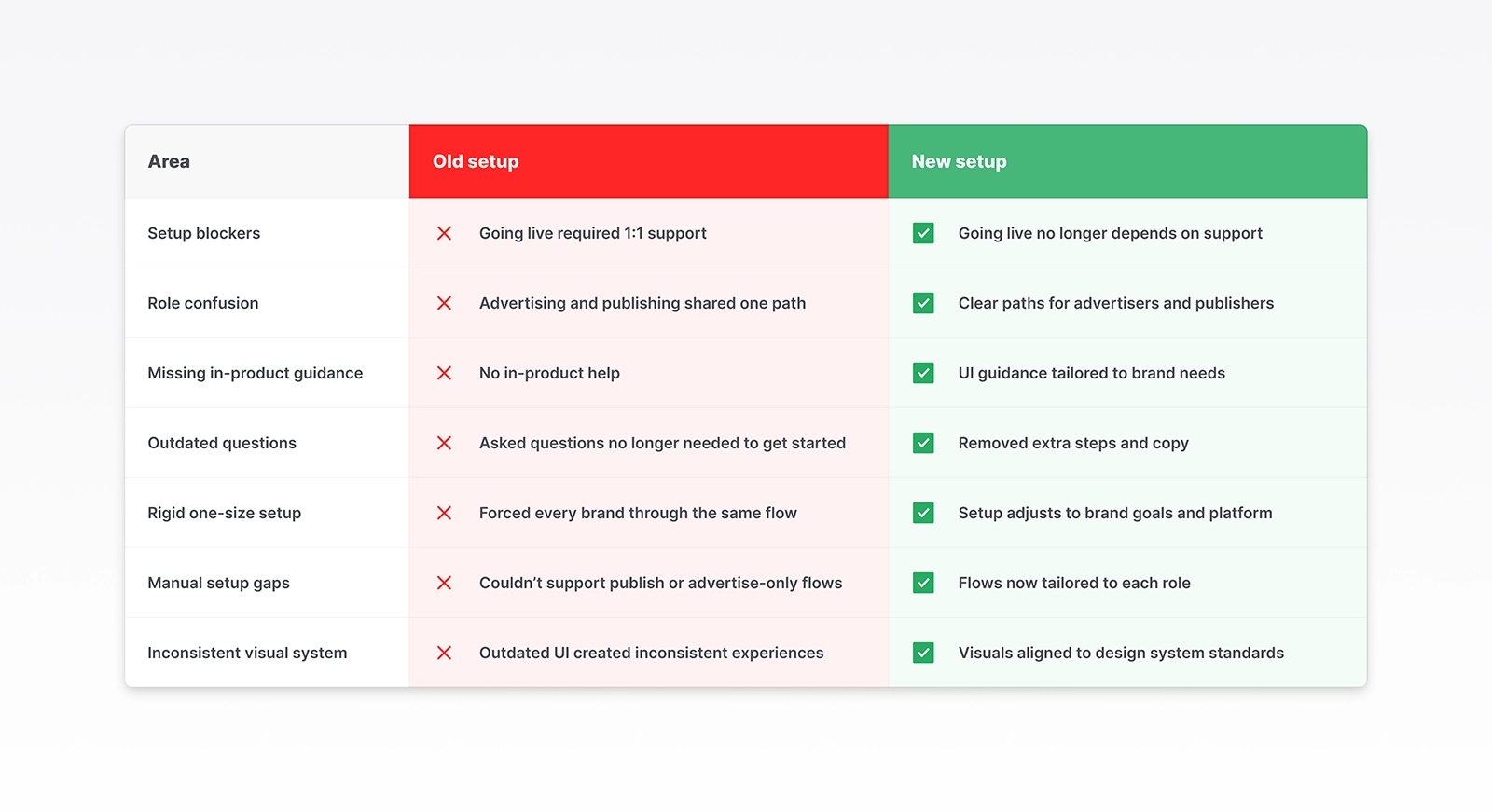
Credits
- Product Manager: Dan Kaufman
- Product Manager: Aaron Cronin
- Frontend Engineer: Aryan Gupta
- Product Marketing: Miriam Young
- Customer Success Manager: Alexandra Hilgart